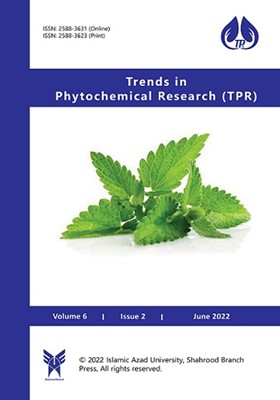-
-
List of Articles
-
Open Access Article
1 - Contribution of the lycotetraose moiety of α-tomatine to the interaction with the main proteases of coronaviruses PEDV and SARS-CoV-2
Gerard Vergoten Christian Bailly -
Open Access Article
2 - Green waste: A fresh approach to antimicrobial compounds
Ruchita Haldar Suresh Kumar Manukonda -
Open Access Article
3 - Discerning the regulated wound healing potential of Ocimum americanum by probing the rosmarinic acid content-a paradigm on zebrafish caudal fin regeneration
Arockiya Anita Margret Ramasamy Maheswari Arokiaraj Sherlin Rosita Edward Jesucastin -
Open Access Article
4 - An overview of traditional medicinal plants as dengue virus inhibitors
Dluya Thagriki Upasana Ray -
Open Access Article
5 - Antioxidant activity of phytol dominated stem bark and leaf essential oils of Celtis zenkeri Engl.
Ejike Okpala Patricia Onocha Muhammad Ali -
Open Access Article
6 - Benzofurans nor-sesquiterpenoids from Petasites hybridus rhizomes and absolute configuration by circular dichroism
Hanieh Asadi Samad Nejad Ebrahimi Marzieh Omrani Hassan Esmaeili
-
The rights to this website are owned by the Raimag Press Management System.
Copyright © 2021-2025







